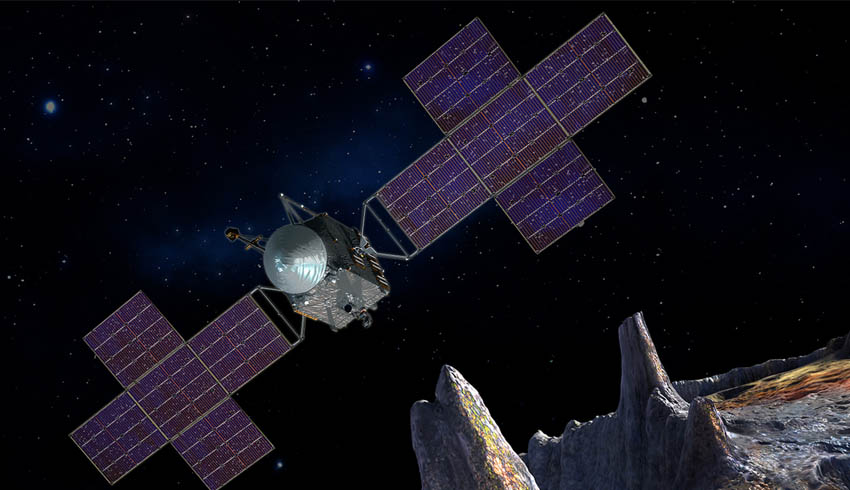Like all NASA missions, early work on Psyche started with drawing up digital blueprints – now the mission has completed the planning and design phase, focus is shifting to high-gear manufacturing of the spacecraft hardware that will fly to its target in the main asteroid belt between Mars and Jupiter.
Then came the building of engineering models, which were tested and retested to confirm that the systems would do their job in deep space – by operating the spacecraft, taking science data and communicating it back to Earth.
That's when NASA examines the designs for all of the project systems, including the three science instruments and all of the spacecraft engineering subsystems, from telecommunications, propulsion and power to avionics and the flight computer.
Lindy Elkins-Tanton, who as principal investigator for Psyche leads the overall mission, said, "It's one of the most intense reviews a mission goes through in its entire life cycle. We passed with flying colours. The challenges are not over, and we're not at the finish line, but we're running strong."
Mission scientists and engineers worked together to plan the investigations that will determine what makes up the asteroid Psyche, one of the most intriguing targets in the main asteroid belt.
Scientists think that, unlike most other asteroids that are rocky or icy bodies, Psyche is largely metallic iron and nickel – similar to Earth's core – and could be the heart of an early planet that lost its outer layers.
Since we can't examine Earth's core up close, exploring the asteroid Psyche (about 226 kilometres wide) could give valuable insight into how our own planet and others formed.
To that end, the Psyche spacecraft will use a magnetometer to measure the asteroid's magnetic field. A multispectral imager will capture images of the surface, as well as data about the composition and topography.
Spectrometers will analyse the neutrons and gamma rays coming from the surface to reveal the elements that make up the asteroid itself.
The mission team made prototypes and engineering models of the science instruments and many of the spacecraft's engineering subsystems. These models are manufactured with less expensive materials than those that will fly on the mission; that way they can be thoroughly tested before actual flight hardware is built.
Elkins-Tanton added, "This is planning on steroids. It includes trying to understand down to seven or eight levels of detail exactly how everything on the spacecraft has to work together to ensure we can measure our science, gather our data and send all the data back to Earth. The complexity is mind-boggling."
Now that Psyche is full-speed ahead on building hardware, there's no time to lose. Assembly and testing of the full spacecraft begins in February 2021, and every instrument – including a laser technology demonstration called Deep Space Optical Communications, led by NASA's Jet Propulsion Laboratory – has a deadline of April 2021 to be delivered to JPL's main clean room.
The main body of the spacecraft, called the Solar Electric Propulsion (SEP) Chassis, is already being built at Maxar Technologies in Palo Alto, California. While observing social-distancing requirements for COVID-19 prevention, engineers there are working to attach the propulsion tanks.
In February 2021, Maxar will deliver the SEP Chassis to JPL in southern California and then deliver the solar arrays that provide all of the power for the spacecraft systems a few months later.
Meanwhile, Psyche work is also buzzing at JPL, which manages the mission. Engineers who are essential to perform hands-on work are building and testing electronic components while following COVID-19 safety requirements. The rest of the JPL team is working remotely.
Psyche project manager Henry Stone of JPL said, "One of the things we pride ourselves on in these deep-space missions is the reliability of the hardware. The integrated system is so sophisticated that comprehensive testing is critical. You do robustness tests, stress tests, as much testing as you can – over and above."
Psyche is set to launch in August 2022, and will fly by Mars for a gravity assist in May 2023 on its way to arrival at the asteroid in early 2026.

